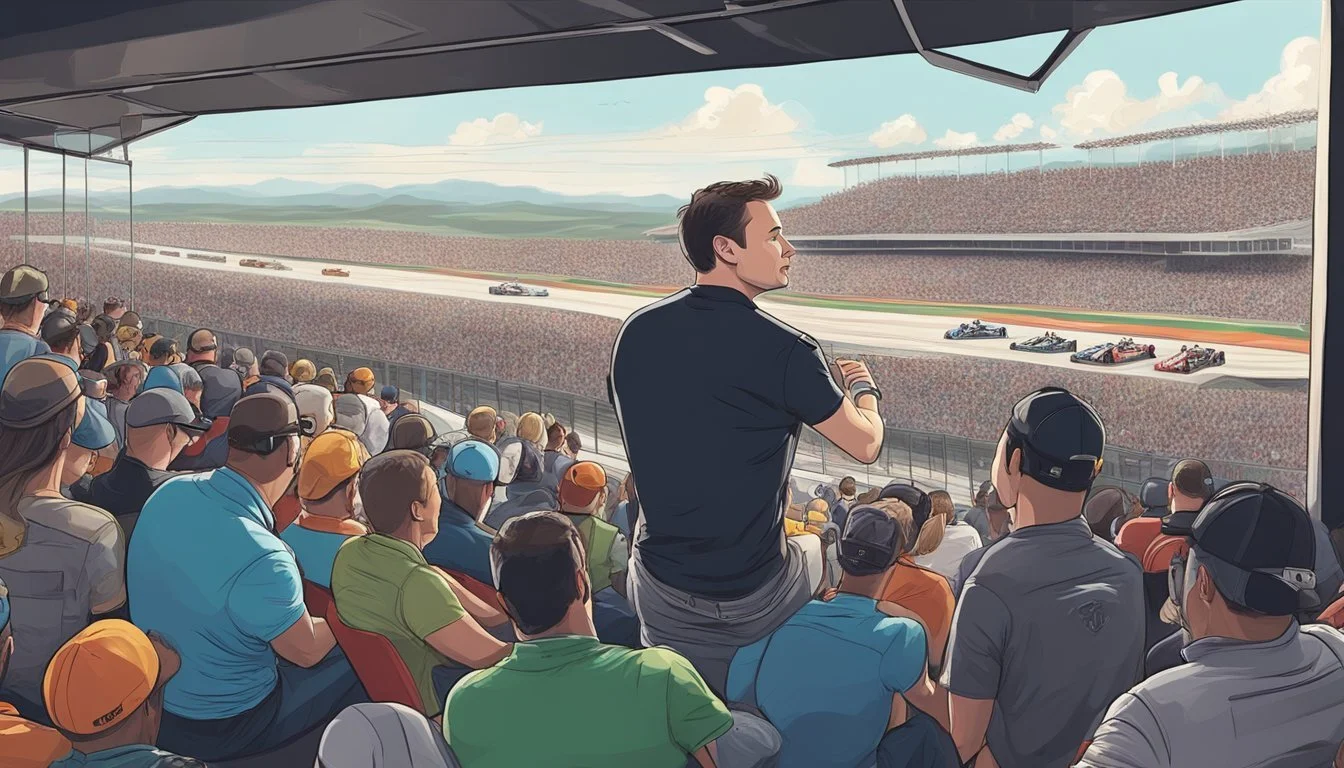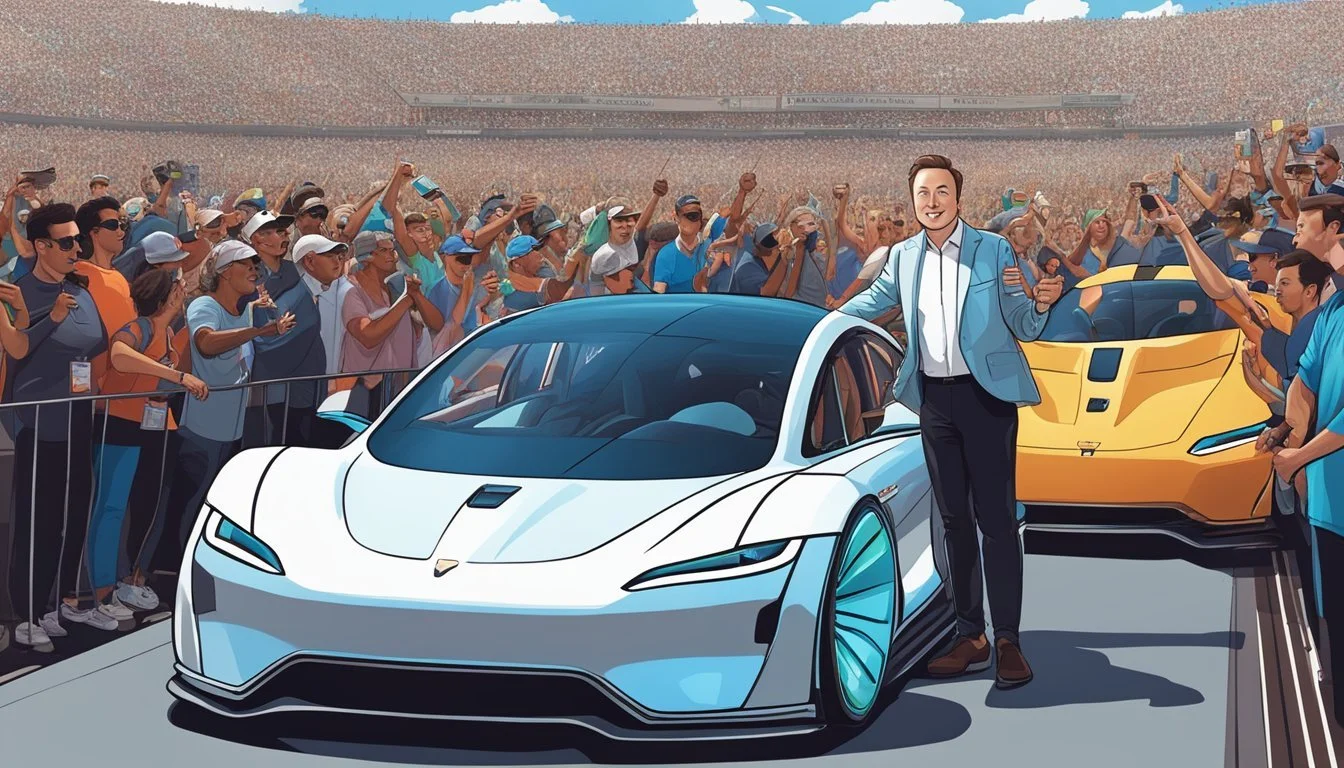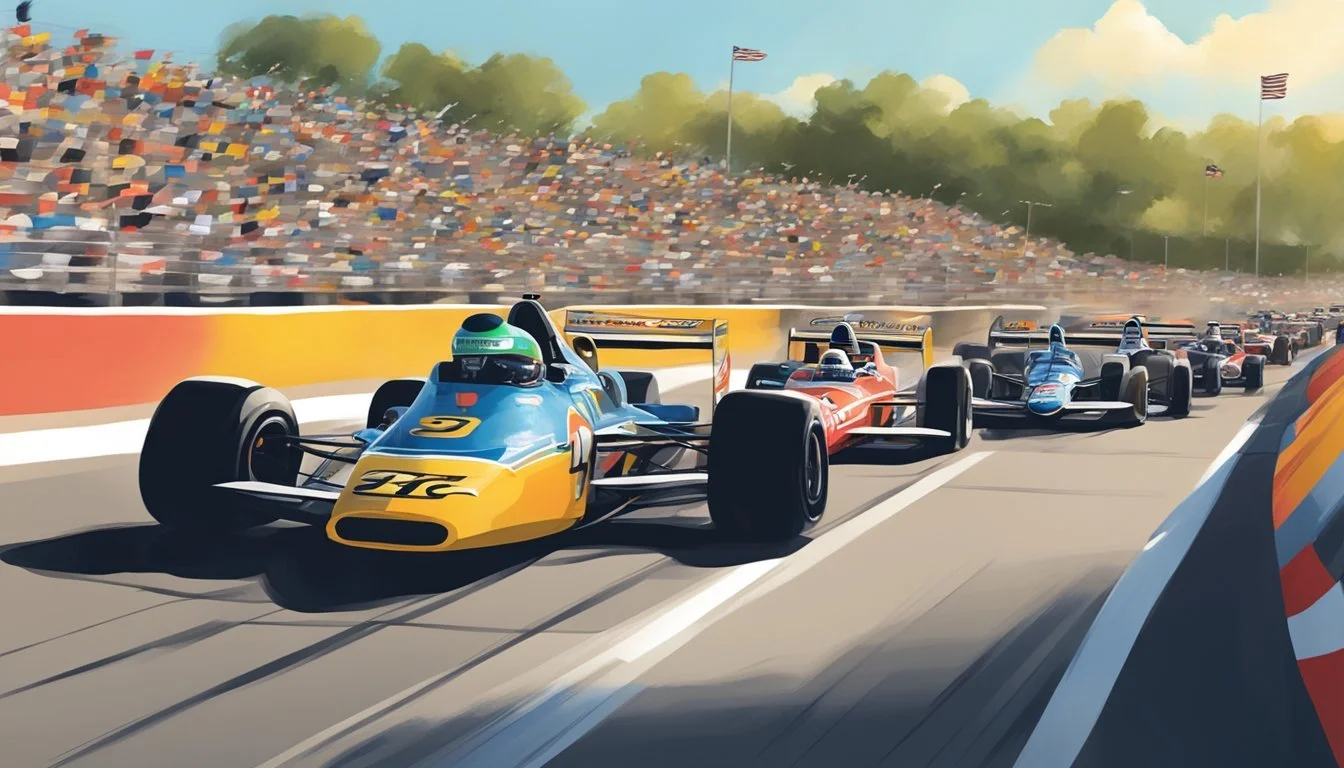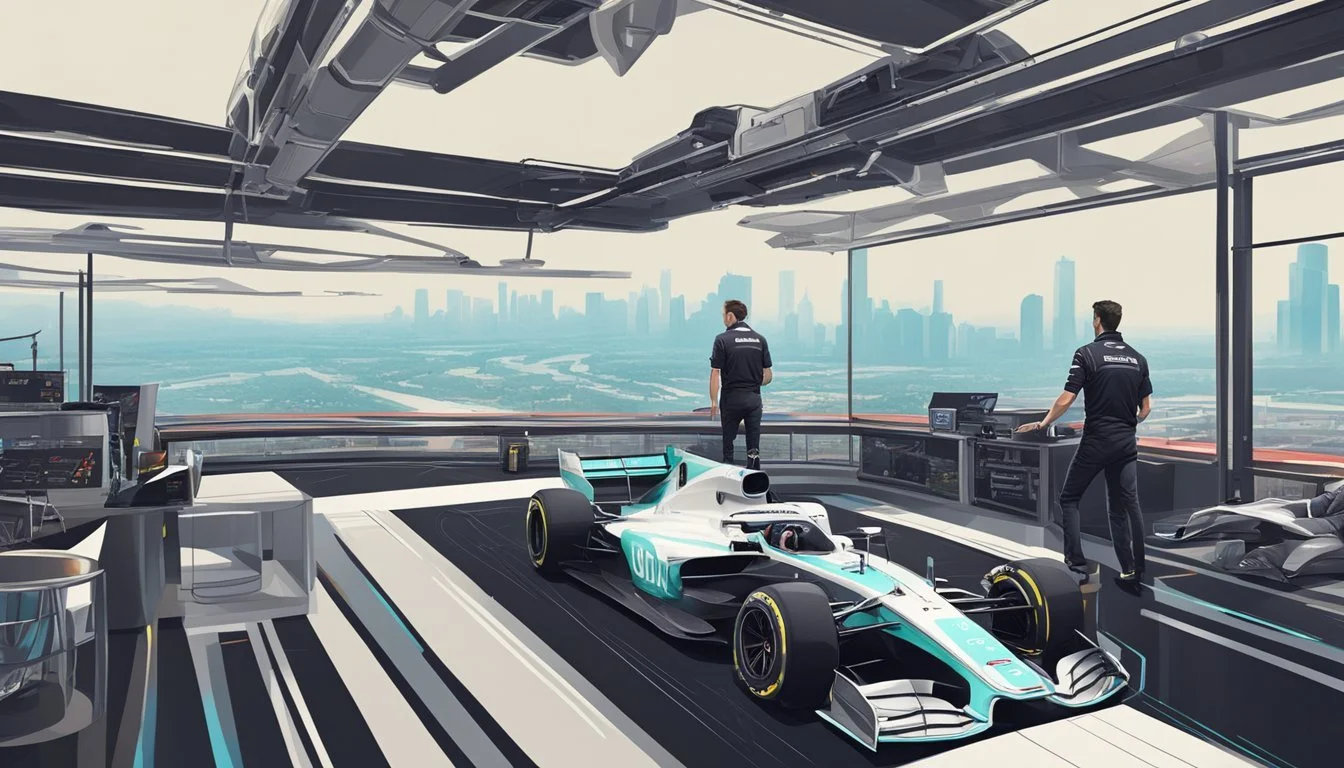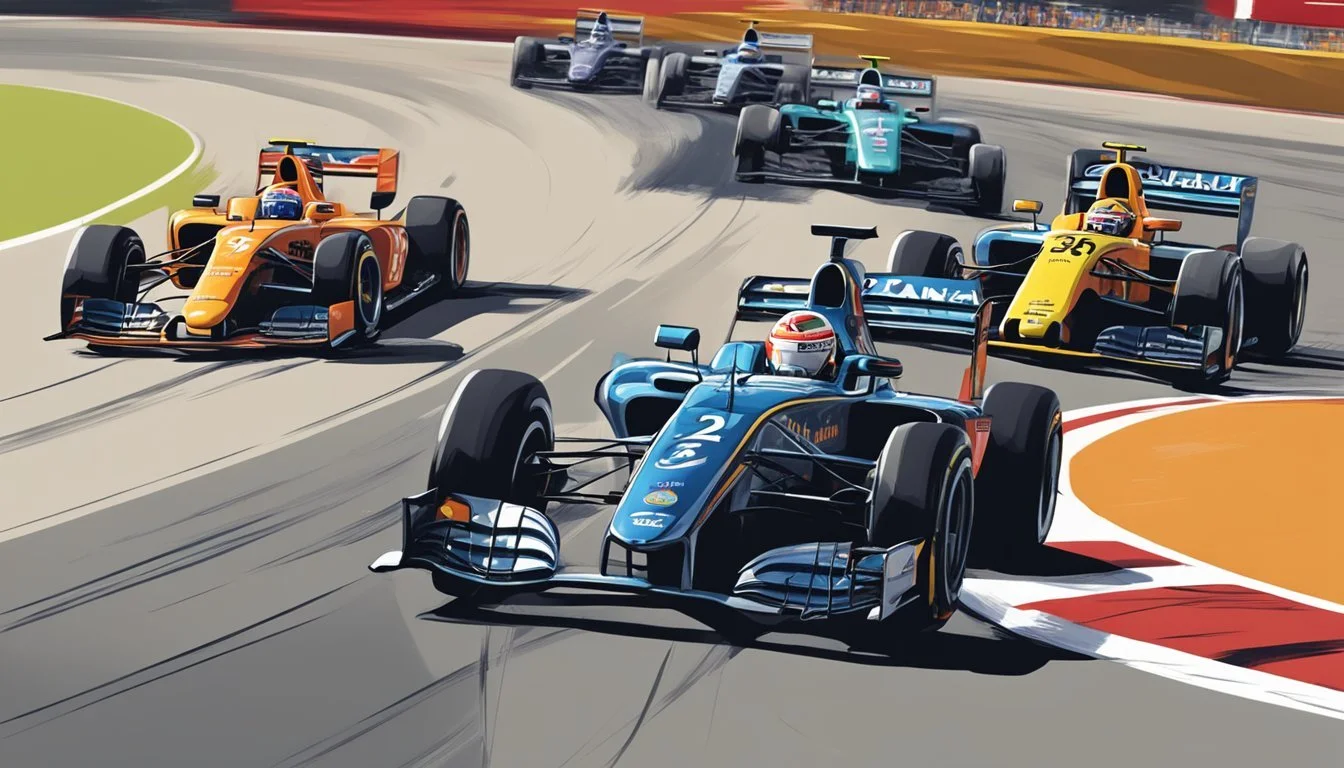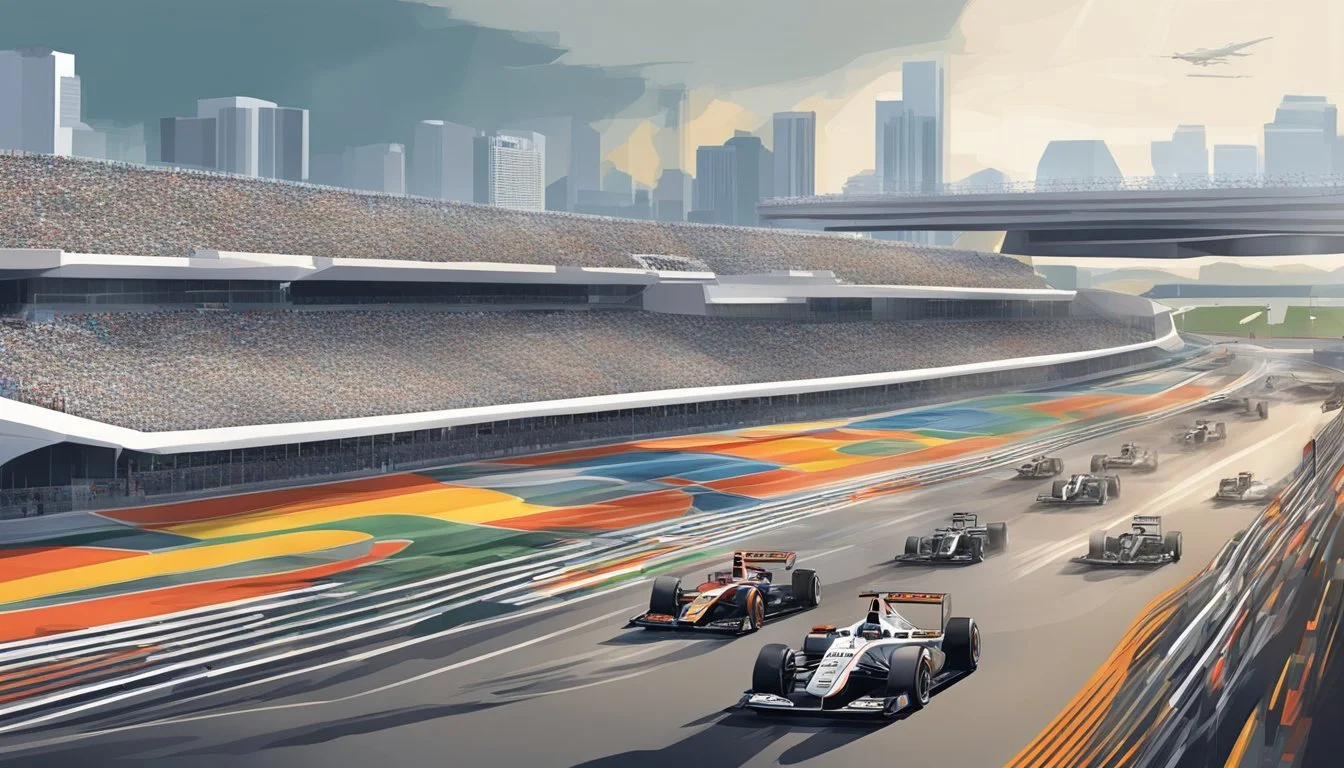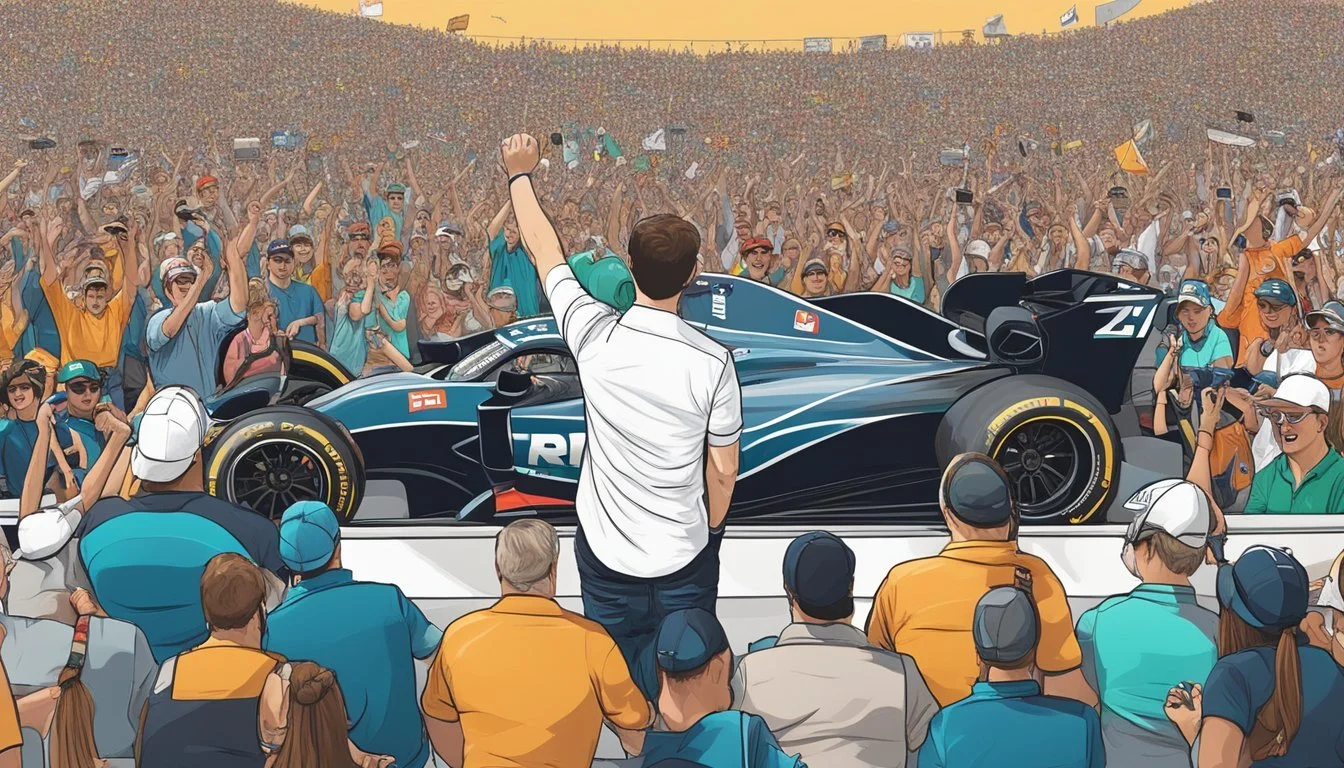Elon Musk Austin Grand Prix Appearance Excites Formula 1 Fans
Tech Mogul's Surprise Appearance Sparks Excitement
Elon Musk made waves at the 2023 United States Grand Prix in Austin, Texas, arriving in style with the highly anticipated Tesla Cybertruck. The event, held at the Circuit of the Americas near Tesla's Giga Texas factory, provided a perfect backdrop for showcasing the futuristic electric vehicle.
Musk's appearance at the Formula 1 race generated significant buzz, highlighting the growing intersection between electric vehicle technology and traditional motorsports. The Cybertruck's presence at such a high-profile event served as a strategic marketing move, capturing attention from racing enthusiasts and tech aficionados alike.
The Austin Grand Prix offered Musk an opportunity to demonstrate Tesla's commitment to innovation and sustainability in the automotive industry. As Formula 1 continues its efforts towards more environmentally friendly practices, the Cybertruck's appearance symbolized the potential future direction of transportation technology.
Profile of Elon Musk
Elon Musk is a prominent entrepreneur and business magnate known for his innovative ventures. Born in South Africa in 1971, Musk has become one of the world's wealthiest individuals through his various successful companies.
Musk co-founded PayPal and currently serves as the CEO of Tesla, SpaceX, and Twitter (now X). His ambitious goals include revolutionizing transportation on Earth and in space, as well as advancing sustainable energy solutions.
At Tesla, Musk has spearheaded the development of electric vehicles and clean energy technologies. The company's Gigafactories, including Giga Texas near Austin, are crucial to Tesla's manufacturing strategy.
Musk is known for his active presence on social media and frequent public appearances. He often uses these platforms to share updates about his companies and engage with customers and fans.
His leadership style is characterized by bold vision and hands-on involvement in product development. Musk's ability to generate media attention has been instrumental in promoting Tesla's brand and products.
Despite his successes, Musk has faced controversy and criticism for some of his public statements and business decisions. His unconventional approach to corporate communication has sometimes led to regulatory scrutiny.
Overview of the Austin Grand Prix
The United States Grand Prix in Austin, Texas has become a highlight of the Formula 1 calendar. The event takes place at the purpose-built Circuit of the Americas, featuring a challenging track layout and modern facilities.
History of the United States Grand Prix
The United States Grand Prix has a rich history dating back to 1908. After several venue changes, the race found its home in Austin in 2012. The Circuit of the Americas was specifically designed to host F1 races, marking a new era for the sport in America. Since its inception, the Austin Grand Prix has grown in popularity, attracting fans from across the globe.
The event typically occurs in October, with the 2023 race scheduled for October 22. Austin's Grand Prix has played a crucial role in rekindling American interest in Formula 1, paving the way for additional U.S. races in Miami and Las Vegas.
Circuit of the Americas Features
The Circuit of the Americas spans 3.4 miles with 20 turns, presenting drivers with a variety of challenges. Its most distinctive feature is the steep uphill run into Turn 1, creating exciting first-lap action. The track incorporates elements inspired by classic circuits, including Silverstone's Maggotts-Becketts complex and Istanbul's multi-apex Turn 8.
Key features:
3.4-mile track length
20 turns
133-foot elevation change
State-of-the-art paddock facilities
120,000 spectator capacity
The circuit also boasts excellent viewing areas for fans, with grandstands offering panoramic views of multiple corners. Its location near Austin provides easy access to the city's renowned entertainment and culinary scenes, enhancing the overall Grand Prix experience.
The Significance of Formula 1 in Austin
The Formula 1 United States Grand Prix at Circuit of the Americas (COTA) in Austin, Texas has become a pivotal event for the city. Since its inception, the race has transformed Austin's international profile and economic landscape.
COTA, a purpose-built F1 track, hosts this prestigious event annually. The circuit's challenging 20-turn, 3.2-mile layout attracts top drivers and teams from around the world.
The economic impact of the Grand Prix on Austin is substantial. Thousands of attendees, including international visitors, flock to the city each year. This influx generates significant revenue for local businesses through accommodation, dining, and entertainment.
Formula 1's presence in Austin extends beyond race weekend. The event has helped position the city as a global destination, attracting year-round tourism and business opportunities.
The United States Grand Prix in Austin also plays a crucial role in growing F1's American fanbase. As the sport gains popularity in the U.S., COTA has become a cornerstone of Formula 1's expansion strategy in North America.
Local culture and F1 have formed a unique blend in Austin. The event showcases the city's vibrant music scene, culinary offerings, and Texan hospitality alongside world-class motorsport.
For Austin, hosting a Formula 1 race elevates its status on the world stage. It joins an elite group of cities capable of hosting such a high-profile international sporting event.
Elon Musk's Involvement in F1
Elon Musk has made notable appearances at Formula 1 events, showcasing Tesla's cutting-edge technology and generating buzz around the brand. His presence highlights the growing intersection between electric vehicles and motorsport.
Tesla's Presence in Motorsport
Tesla, under Musk's leadership, has not directly participated in Formula 1 racing. However, the company's influence on automotive technology has sparked discussions about the future of motorsport. Tesla's advancements in electric powertrains and battery technology align with F1's increasing focus on sustainability and hybrid power units.
Musk's attendance at Grand Prix events, such as the 2023 Miami Grand Prix, has fueled speculation about Tesla's potential involvement in racing. During his visit, Musk received an exclusive tour of the Red Bull Team's garage from team boss Christian Horner, suggesting a growing interest in F1's technical aspects.
The Cybertruck Showcase
At the 2023 United States Grand Prix in Austin, Texas, Musk made a striking entrance by arriving in Tesla's highly anticipated Cybertruck. This move garnered significant attention, effectively turning the F1 event into a promotional platform for Tesla's upcoming electric pickup.
The Cybertruck's presence at the Grand Prix served multiple purposes:
Generating free advertising for Tesla
Demonstrating the vehicle's real-world capabilities
Connecting Tesla's innovative design with the high-tech world of F1
Musk's strategic decision to showcase the Cybertruck at a major racing event highlighted the vehicle's potential appeal to motorsport enthusiasts and tech-savvy consumers alike.
Impact of the Grand Prix on Austin
The Formula 1 United States Grand Prix has become a significant event for Austin, Texas. Held at the Circuit of the Americas, the race attracts thousands of visitors from around the world.
This influx of fans provides a substantial economic boost to the city. Hotels, restaurants, and local businesses experience increased revenue during race weekends.
The Grand Prix also enhances Austin's international profile. Global media coverage showcases the city to millions of viewers, potentially attracting future tourists and investors.
Circuit of the Americas hosts various events throughout the year, contributing to Austin's reputation as a major entertainment destination. The venue's proximity to Giga Texas, Tesla's manufacturing facility, further reinforces the area's growing technological significance.
Job creation is another positive impact. The Grand Prix and associated events generate temporary and permanent employment opportunities for local residents.
Traffic congestion and noise are temporary downsides during race weekends. However, infrastructure improvements made to accommodate the event benefit the city year-round.
The Grand Prix's success has inspired other major sporting events to consider Austin as a host city, diversifying the local events calendar.
Comparisons to Other Grand Prix Events
The United States Grand Prix in Austin stands out among Formula 1 races for its unique Texas flair and growing popularity. It shares some similarities with other American F1 events while differing from European races in key ways.
Miami Grand Prix Overview
The Miami Grand Prix joined the F1 calendar in 2022, offering a glamorous contrast to Austin's event. Miami's street circuit winds around Hard Rock Stadium, creating a party atmosphere with celebrity sightings and beach-themed areas. The race attracts a star-studded crowd and emphasizes entertainment alongside racing action.
Miami's track is 3.36 miles long with 19 turns, slightly shorter than Austin's 3.41-mile Circuit of the Americas. Both events showcase distinctly American settings, but Miami leans into its coastal vibe while Austin highlights Texas culture.
Other F1 Grand Prix Races
European Grand Prix events often feature historic tracks and racing traditions. Monza in Italy and Silverstone in the UK have hosted F1 races for decades, with passionate fans and deep motorsport heritage.
Middle Eastern races like Bahrain and Abu Dhabi offer modern facilities and night racing. These events contrast with Austin's daytime race and natural terrain circuit.
Asian Grand Prix races in Japan and Singapore provide unique backdrops. Suzuka's figure-8 layout and Singapore's night street race differ greatly from Austin's purpose-built track.
Austin's event stands out for its live music focus, reflecting the city's reputation as the "Live Music Capital of the World."
Technical Aspects of F1 Racing
Formula 1 represents the pinnacle of motorsport technology. Cars in F1 utilize hybrid power units that combine internal combustion engines with energy recovery systems.
The 1.6-liter V6 turbocharged engines produce around 1,000 horsepower. Energy recovery systems capture heat and kinetic energy under braking to provide additional electric power.
Aerodynamics play a crucial role in F1 performance. Teams spend millions on computational fluid dynamics and wind tunnel testing to optimize downforce and reduce drag.
F1 cars feature carbon fiber monocoque chassis for strength and lightness. Advanced materials like titanium and exotic alloys are used throughout to minimize weight.
Key Technical Components:
Hybrid power unit
Carbon fiber chassis
Active aerodynamics
Semi-automatic gearbox
Carbon-ceramic brakes
Tire management is critical in F1 racing. Teams must balance grip and durability across different compounds provided by Pirelli, the official tire supplier.
Advanced telemetry systems transmit real-time data from hundreds of sensors on the car to engineers in the pits and at team factories. This allows for rapid strategy adjustments during races.
Mercedes-Benz has been a dominant force in the hybrid era of F1, winning multiple championships with their innovative power unit and chassis designs.
Key Figures in Current F1 Racing
Max Verstappen and Red Bull Racing dominate the current Formula 1 landscape. Their exceptional performance and strategic prowess have reshaped the competitive dynamics of the sport.
Driver Spotlight: Max Verstappen
Max Verstappen stands as the undisputed leader in Formula 1. The Dutch driver has showcased remarkable skill and consistency throughout the 2024 season. His aggressive yet calculated driving style has resulted in numerous victories and podium finishes.
Verstappen's ability to extract maximum performance from his car in various conditions sets him apart. He excels in both wet and dry races, demonstrating exceptional car control and racecraft. His partnership with Red Bull has been pivotal in achieving this success.
Key statistics for Verstappen in 2024:
Race wins: 15
Pole positions: 12
Fastest laps: 10
Team Analysis: Red Bull Racing
Red Bull Racing has established itself as the team to beat in Formula 1. Their RB20 car has proven to be a masterpiece of engineering, combining superior aerodynamics with a powerful and reliable power unit.
The team's success is not limited to car design. Their pit stop crew consistently delivers the fastest tire changes on the grid, often under 2 seconds. This efficiency provides crucial advantages during races.
Red Bull's strategic decisions have also been instrumental in their dominance. Their ability to adapt race strategies in real-time has often outmaneuvered competitors. The synergy between the technical team, strategists, and drivers has created a formidable force in F1.

